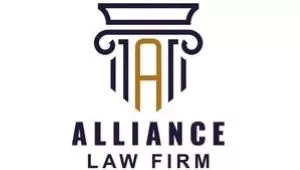- within Insolvency/Bankruptcy/Re-Structuring topic(s)
- in United States
- with readers working within the Securities & Investment and Law Firm industries
- within Insolvency/Bankruptcy/Re-Structuring, Tax and Finance and Banking topic(s)
INTRODUCTION:
Madam Bernice was a well-known entrepreneur in Nigeria in the 1970s and 1980s. She had a big business dream to start a family fashion business that would outlive her and be a blessing to future generations. That dream did come to fruition, as “Bernice Fashion Enterprise” was established sometime in 1972 and became a registered company in 1978, acquiring a new name “Bernice Fashion Limited.” (real names withheld). The company enjoyed pioneering status in the fashion industry and was the home of various wears for children and adults, male and female. The company's products were beautifully made and were durable. Its “Bernice” logo, which was always beautifully inscribed on the back (inside) of all its products, became very popular and sought-after, and enjoyed enormous goodwill within and outside Nigeria. The company continued to do well even after Madam Bernice retired from its management and her eventual passing sometime in 1992. Sometime in 2011, the company obtained a credit facility of ₦250,000,000 (Two Hundred and Fifty Million Naira only) from ABC Bank (real name withheld) to augment its working capital. With the said funds, it was able to import more sophisticated machines and raw materials for its operations. Though the company made some repayments, it was unable to fully liquidate its indebtedness which had risen to the sum ₦500,000,000 (Five Hundred Million Naira only) when the bank made a demand for full repayment sometime in 2020. Armed with the Deed of Legal Mortgage between the parties and an enrolled order of a judge of the Federal High Court, ABC Bank appointed a Receiver/Manager who took over the management of the company. The initial action of the Receiver/Manager was to commence downsizing, and all the staff of the company were laid off within six months. These actions were followed in quick succession by the sales of available raw materials, machines, spare parts of machines, and other assets of the company. The company has since ceased all operations and currently exists only in the archives of the Corporate Affairs Commission.
The above is a typical scenario prior to the repeal of the Companies and Allied Matters Act, 1990 (hereinafter referred to as “CAMA 1990”) by the Companies and Allied Matters Act, 2020 (hereinafter referred to as “CAMA 2020”). This article discusses provisions on insolvency under both CAMA 1990 and CAMA 2020 and the significant innovations in the latter.
INSOLVENCY AND BUSINESS RECOVERY:
In Nigeria, insolvency procedure for businesses was governed mainly by CAMA 1990, and now by CAMA 2020. Other specialized legislations may provide sector-specific insolvency requirements,1 but for this article, CAMA 2020 will be the main focus.
Insolvency and business recovery are distinct concepts in corporate finance. Insolvency occurs when a company is unable to meet its debt obligations as at when due, leaving it unable to repay lenders or creditors. In other words, a company is said to be insolvent when its liabilities exceed the value of its assets. This situation often arises due to unforeseen market conditions or poor financial management, resulting in inadequate cash flow.2 Generally, to determine whether a Company has become insolvent, there are some tests that can be conducted. The tests will be listed below and explained briefly:
- The Cash-Flow Test– Here, the goal is to ascertain the possibility of a company not being able to settle its debt, whether at present or within a short period. Under this test, we have the CCC approach (Cash Conversion Cycle). A company can have assets in inventory from which cash can be realized. CCC approach will enable the company to know the required number of days to purchase an inventory, sell the products/materials to customers and then pay suppliers. The longer the CCC, the more difficult it will be for a company to have cash flow. Under this test, we can also engage the Defensive approach to find out how long a company can sustain itself on its present financial strength without resorting to sources of income from the future. Where assets are less than the liabilities, the Company is insolvent.
- The Balance Sheet TEST- By this test, it will be shown whether a company has more assets or liabilities. Again, it will reveal whether the assets will be enough to settle present liabilities and future ones. If the Company's assets cannot satisfy these liabilities, then it is balance sheet insolvent.
There are other ways to know if a company is insolvent or still a going concern. A company is insolvent when a creditor serves a demand notice on it at its registered address and it is unable to pay the outstanding sum. Also, when there is a judgment sum awarded against the company which it is unable to pay, then it can be reasonably concluded that it is insolvent. To fully determine the financial health of a company, one needs to ascertain its current assets and liabilities, the future assets and liabilities, as well as the time of maturity for each when it is futuristic. For instance, BCA Company Ltd may have an immovable asset (a 3-bedroom duplex) of a current worth of ₦900,000,000 (Nine Hundred Thousand Naira), which it intends to sell after six (6) years when full ownership will pass to it. The same Company may have an outstanding debt of ₦1,000,000 (One Million Naira only), which is expected to crystalize within a year. If at the end of one year, the present assets of the company cannot satisfy the debt of ₦1,000,000 (One Million Naira only) as at when due, it will be declared insolvent, the future value to be realized from the immovable property notwithstanding. The reason is not far-fetched as the company cannot satisfy its debt as at when due.
Under the CAMA 1990, a company is deemed insolvent if it is indebted in the sum above ₦2,000.00 (Two Thousand Naira),3 while under CAMA 2020, the sum is above ₦200,000.00 (Two Hundred Thousand Naira only)4 For a debt to render the company insolvent, a demand must have been made for a period of three (3) weeks, with the letter delivered at the registered office.5 In addition, execution of a Judgment remains unsatisfied, whether in full or in part, if the court takes into consideration the liabilities of the Company and comes to a reasonable conclusion that it cannot be paid.6
In contrast, business recovery refers to the strategic processes employed to rehabilitate financially distressed companies, ensuring their continued existence while balancing the interests of creditors, employees, and stakeholders. Unlike traditional insolvency, which often leads to asset liquidation, business recovery mechanisms prioritize restructuring, debt rescheduling, and operational efficiency improvements to restore company viability. In other words, the goal of business recovery is to revive a dying company and make it a going concern instead of giving it a befitting burial.
INSOLVENCY FRAMEWORK UNDER CAMA 1990:
CAMA 1990 provided limited avenues for financially distressed companies to recover. The primary mechanisms available were Receivership, Arrangement and Compromise, and Winding up/dissolution.
RECEIVERSHIP:
Receivership involves the appointment of a Receiver or Receiver/Manager, either by the court or by creditors, to manage a distressed company's assets primarily for the benefit of creditors, particularly secured creditors.7 Under CAMA 1990, a Receiver/Manager is granted enormous powers.8 The primary role of the Receiver is to focus on liquidating specific assets to recover funds for secured creditors. However, if appointed as a Receiver/Manager, they take on a broader role, not only realizing the funds of the creditor(s) but also running the company's operations temporarily to improve its financial position and potentially restore business viability.9 Unlike the company's directors, who manage the business in the interest of shareholders and overall corporate growth, a Receiver/Manager's primary duty is to act in the best interests of secured creditors, often overriding the authority of the directors during the receivership period. This process is creditor-centric with little regard for broader stakeholder interests. It may be argued that creditors' rights must be safeguarded to maintain confidence in the financial market. However, as much as debt recovery is vital, a mechanism that considers both creditor interests and business sustainability would be more beneficial.
It is important to state that a company undergoing receivership does not lose its legal identity; however, the powers of the company over the assets covered under the receivership are temporarily suspended, and assets not covered under the receivership can be dealt with even during the subsistence of the process (receivership).
CAMA 1990 lacked clarity on certain aspects, particularly regarding who qualified as an “interested person” eligible to apply for the appointment of a Receiver/Manager. However, judicial interpretation has provided much-needed guidance. In Intermarket (Nig) Ltd v. Aderounmu10, it was held that creditors, members, and directors all fall within the category of “interested parties.” It further clarified that any of these parties may request the appointment of a receiver or receiver-manager, provided they can demonstrate a credible threat to the company's property and explicitly seek such relief.
ARRANGEMENT AND COMPROMISE:
This mechanism allowed companies to negotiate debt restructuring agreements with creditors and members.11 Under CAMA 1990, a company may reach an arrangement or compromise with its creditors or members or any class of them to be sanctioned by the court.12 The outcome of the process was mostly determined by how well the management of the company was able to negotiate the company out of its debt; any agreement reached and the money paid to the creditors is considered a full settlement of the debt, and the debtors will not be permitted to bring up the debt in the future. However, its application was rare, as creditor cooperation was often difficult to secure.
WINDING UP PROCEDURES:
It is the procedure through which a business is dissolved and its assets allocated in line with priority rules for the benefit of its members, creditors, and workers.13 The winding-up procedure applies to both solvent and insolvent companies and has as its ultimate goal, the settlement of creditors and stakeholders to the greatest extent possible, the termination of all business and legal relationships, and, finally, the removal of the company's name from the register of companies. It does not aim to rescue businesses, making it a dissolution-focused procedure.14
It is instructive to note that, despite the innovations in CAMA 2020, the insolvency provisions under CAMA 1990 discussed above are substantially preserved under CAMA 2020.
BUSINESS RECOVERY UNDER CAMA 2020:
Before the enactment of the CAMA 2020, Nigeria's insolvency framework was primarily liquidation-focused, making limited provisions for distressed companies to recover. However, CAMA 2020 introduced significant company rescue mechanisms designed to prevent businesses from facing imminent liquidation. As a result, CAMA 2020 places a greater emphasis on business recovery compared to its predecessor, CAMA 1990.
Under the CAMA 2020, the goal is the timely identification of insolvency threats and to look for ways of fixing such to prevent the collapse of the affected company. Business recovery is not only important for debtors, but is also important for creditors and the economy of the country. Insolvency is one of the reasons for restructuring a company, but beyond this, there may be other reasons like compliance with existing regulations, laws/statutes, expansion, the need for proper management, the need for increased market share, etc. The CAMA 2020, introduced two new measures for business recovery in addition to the existing ones. The fact that the measures are focused on recovering businesses rather than liquidation is laudable. These two measures are Administration and Company Voluntary Arrangement (CVA).
ADMINISTRATION:
Administration, as introduced under CAMA 2020, is a formal insolvency process aimed at rescuing financially distressed companies as a going concern while prioritizing business continuity. When a company enters administration, an Administrator who is appointed by the court, the company or its directors, or the holder of a floating charge,15 takes control of its affairs to restructure the business, settle debts, and, where possible, avoid liquidation. The key objective is to maximize value for creditors while allowing the company to continue its operations, either in its existing form or through a restructuring process.16 Unlike receivership , which primarily serves the interests of secured creditors,17 administration seeks a more balanced approach by protecting the company, its employees, and stakeholders while working toward financial recovery. Upon appointment, an Administrator serves Notice of demand on the necessary officers of the Company to produce up-to-date information/facts concerning the affairs of the Company. Such information must be verified on oath.
Where a company is in administration, a statutory moratorium is imposed on other legal processes,18 preventing creditors from requesting a winding up, appointing a Receiver, or seizing the company's assets while an administration order is in effect. No action can be taken to enforce winding-up against the company's property while it is in administration, unless the Administrator or the court agrees to it. Thus, a moratorium under CAMA 2020 has the effect of an automatic stay or suspension of all other legal processes stated in the relevant section.
The goal of a moratorium is to maintain the administration process in its entirety. If creditors are permitted to take action against the company's assets, then the whole essence of a moratorium is defeated.19It is argued that the process may delay creditor recovery and be susceptible to abuse. However, the moratorium ensures a structured recovery plan, benefiting all stakeholders. While delays may occur, prioritizing business recovery fosters long-term economic stability.
COMPANY VOLUNTARY ARRANGEMENT:
A Company Voluntary Agreement (CVA), as provided under CAMA 2020, is a formal procedure that allows a company in financial distress to reach a binding agreement with its creditors to restructure or reduce its debt obligations.20 This process involves the company's directors proposing a payment plan or arrangement that is intended to be manageable for the company while also ensuring creditors receive a fair portion of the amounts owed.21 A CVA is designed to avoid liquidation by providing a structured pathway for the company to recover financially, thereby preserving business operations and protecting the interests of stakeholders. Unlike receivership, which focuses on asset liquidation, a CVA offers the company an opportunity to continue its operations while negotiating a manageable debt settlement plan.
If a company is under administration or liquidation, the administrator or liquidator can propose a Company Voluntary Arrangement. Section 434(2)22 further provides for a person known as a ‘nominee'23 whose responsibility, among others, is to either act as a trustee or supervise the implementation of the voluntary arrangement. Most of the time, such a Nominee works with the directors of the Company in preparing the proposal. Its success depends on creditor cooperation and realistic proposals, which is an issue. However, proper regulatory oversight ensures fair negotiation and execution.
KEY COMPARATIVE FACTORS BETWEEN INSOLVENCY UNDER CAMA 1990 AND
BUSINESS RECOVERY UNDER CAMA 2020
- FOCUS ON BUSINESS RECOVERY:
CAMA 1990 primarily facilitated creditor-driven processes that led to asset liquidation, often resulting in job losses, which often led to economic setbacks. The introduction of administration and CVAs under CAMA 2020 reflects a shift towards business continuity and rehabilitation, ensuring that financially distressed companies have an opportunity to restructure and regain solvency. This change is crucial for economic stability, as it allows companies to preserve value and maintain employment rather than being prematurely dissolved.
- STAKEHOLDERS' PROTECTION:
One of the major criticisms of CAMA 1990 was its emphasis on secured creditors, often at the expense of other stakeholders, including employees and unsecured creditors. CAMA 2020 adopts a more balanced approach by ensuring that insolvency procedures consider the interests of all stakeholders. For example, the administration imposes a moratorium that prevents secured creditors from enforcing their security while restructuring efforts are ongoing, thereby preserving the business as a going concern.24 This ensures that unsecured creditors and employees also have a fair chance at recovering their interests.
- FLEXIBILITY IN INSOLVENCY MANAGEMENT:
Unlike CAMA 1990, the introduction of administration and CVAs under CAMA 2020 provides companies with structured alternatives to outright liquidation. These options allow businesses to reorganize operations, negotiate with creditors, and implement recovery strategies that benefit all stakeholders. The flexibility offered under CAMA 2020 makes insolvency procedures more adaptable to varying financial circumstances.
- ENHANCED CREDITOR CONFIDENCE:
While CAMA 2020 prioritizes business recovery, it does not disregard creditor rights. Instead, it introduces structured negotiation processes that ensure creditors can recover debts in an orderly and legally recognized manner. For instance, CVAs provide a legally binding framework for debt restructuring, ensuring that all creditors are treated fairly under an agreed-upon repayment plan.25 This structured approach increases creditor confidence in the system, as it minimizes the uncertainties associated with ad hoc debt settlements.
CONCLUSION:
If, at the time the travails of Bernice Fashion Limited occurred, CAMA 1990 had provisions on business recovery similar to those now contained in CAMA 2020, it is most probable that its fate would have been quite different, as it would have availed itself of any of the new options provided under CAMA 2020, like CVA or Administration. Not a few Nigerian companies suffered the same fate as Bernice Fashion Limited.
The transition from CAMA 1990 to CAMA 2020 represents a fundamental shift in Nigeria's corporate insolvency landscape. While CAMA 1990 was largely focused on liquidation, CAMA 2020 introduces a business recovery-oriented approach that prioritizes corporate rescue over liquidation. The addition of administration and CVAs provides businesses with structured mechanisms to regain financial stability, offering a more flexible and balanced approach to insolvency management.
By prioritising business continuity, protecting diverse stakeholders' interests, and enhancing creditor confidence, CAMA 2020 aligns with international best practices in corporate insolvency. This shift is essential for fostering a resilient and sustainable business environment in Nigeria, ensuring that financially distressed companies are given a fair chance at recovery rather than facing premature liquidation.
Footnotes
1. For example, the Banks and Other Financial Institutions Act (BOFIA) 2020 which primarily regulates the establishment of banks, banking operations, and financial institutions in Nigeria empowers the Central Bank of Nigeria (CBN) to regulate the restructuring management and insolvency of banks and other financial institutions in Nigeria, We have the Bankruptcy and Insolvency (Repeal and Re–enactment) Act, 2016 amidst others.
2. view link 14th February 2025.
3. Section 409, CAMA 1990.
4. Section 572 (a), CAMA 2020.
5. Ibid.
6. Section 572 (b) & (c), CAMA 2020.
7. Sections 387-400, CAMA 1990.
8. Schedule 11, CAMA 1990.
9. Sections 387-421, CAMA 199.
10. (1998) 12 NWLR (Pt. 576) 141.
11. Section 538, CAMA 1990.
12. Section 539, CAMA 1990.
13. Tate Industries Plc V Devcom M.B Ltd (2004) 17 NWLR (Pt. 901) CA 182 at 225.
14. Sections 409,537-540 CAMA 1990.
15. Section 443(1) CAMA 2020.
16. Chapter 18, CAMA 2020.
17. Bhadmus on Corporate Law Practice, Yemi Bhadmus, 5th Edn, p.440.
18. Section 480(1)-(6), CAMA 2020.
19. Nigerian Bar Journal: Company Voluntary Arrangements (CVA) & Administration of Companies: An Appraisal,p. 158.
20. Chapter 17, Section 434 CAMA 2020.
21. Supra, Section 435.
22. CAMA 2020.
23. This person shall be qualified to act as an insolvency practitioner, section 434(2), CAMA 2020.
24. Section 443(1), CAMA 2020).
25. Section 434, CAMA 2020.
The content of this article is intended to provide a general guide to the subject matter. Specialist advice should be sought about your specific circumstances.




